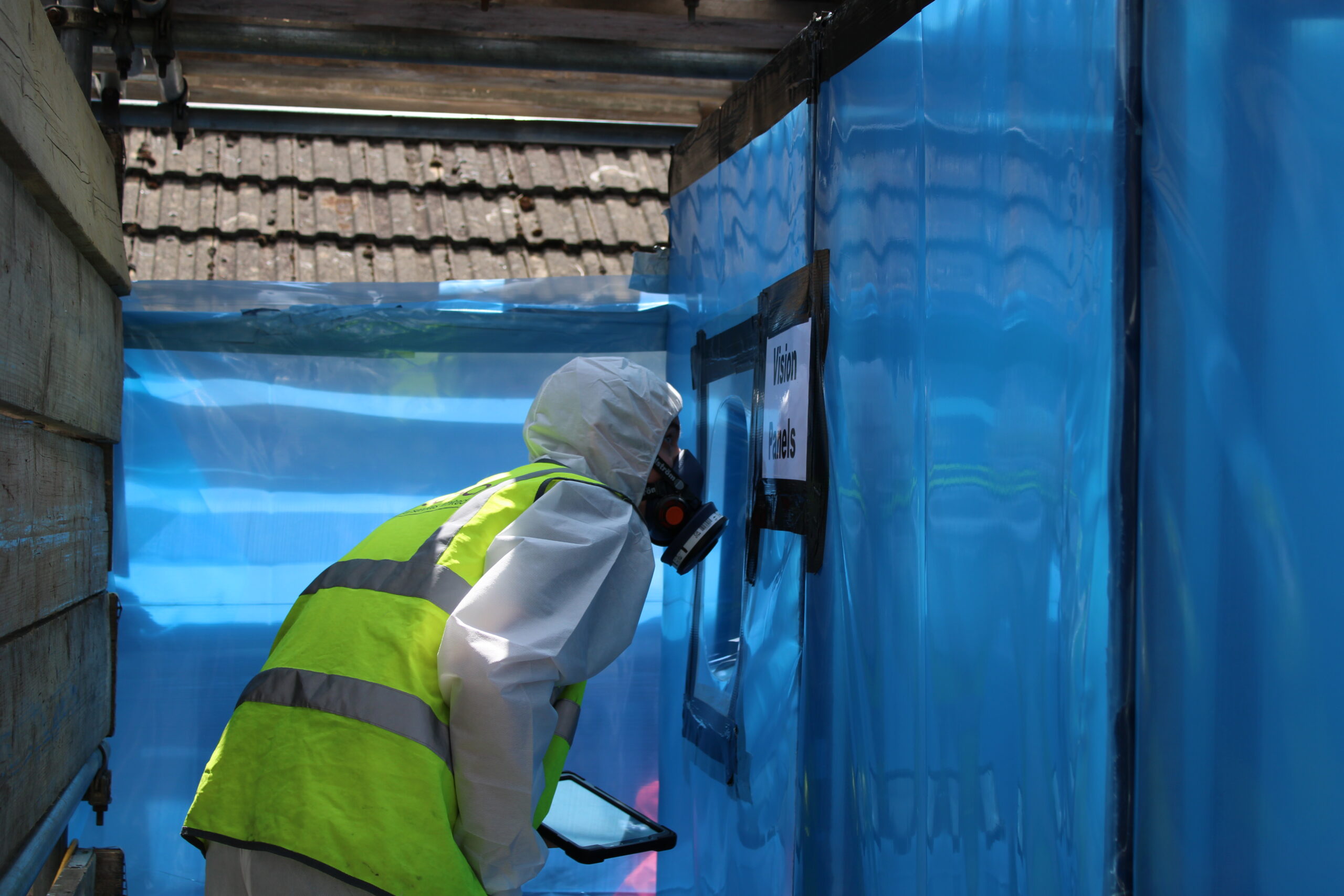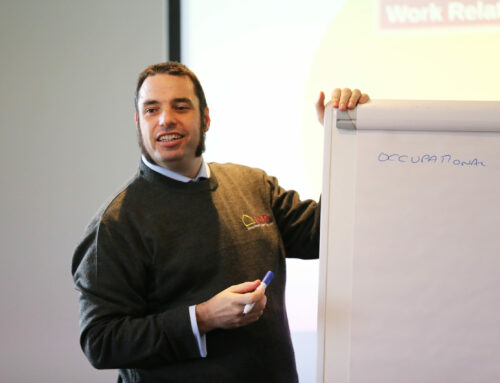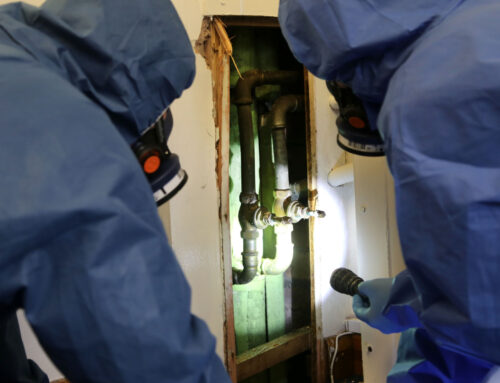
The 4-Stage Reoccupation Process
As a UKAS accredited asbestos consultancy, Casa is able to perform this reoccupation test to ensure the property owner’s compliance to asbestos regulations, and the safety of occupants.
The 4-stage reoccupation process is an essential part of the asbestos removal process. It is crucial that property managers who have licensed asbestos removal work carried out on their premises fully understand what constitutes the reoccupation process for tenants. As detailed in the Control of Asbestos Regulations 2012, it is a legal requirement that this process takes place following the removal work, and prior to the building becoming reoccupied.
The HSE strongly recommends that the analyst for site clearance clarification is independently sourced and employed by the building owner in control of the premises. This arrangement should:
– Create a clearer contractual situation on site;
– Help avoid any conflict of interest that may arise should the analyst be employed by the removal contractor;
– Provide additional assurance that the inspection process is undertaken impartially and objectively, as required by International Organisation for Standardisaton (ISO) 17205;
– Enable the independent analyst to be involved in resolving any problems (between the building client and contractor) that may arise.
The clearance test:
Licensed Removal is almost always undertaken inside a sealed enclosure. Following licensed asbestos removal work, and prior to reoccupation of the affected area, a series of tests are carried out. These reoccupation tests allow us to ensure that all removals works have been carried out in accordance with the Licensed Asbestos Removal Contractors plan of work. At this stage, we can also ensure that the area is clean, dry, dust-free, and suitable for reoccupation.
The 4-stage re-occupation process:
Stage 1: Preliminary check of site condition and job completeness
During this first stage, Casa will confirm the scope of work and prepare or obtain a diagram that demonstrates the following areas requiring clearance:
• The Decontamination Unit
• The Enclosure, surrounding areas, waste, and transit routes.
• The Integrity of enclosure.
• The Interior of enclosure using viewing panels/ CCTV.
During this first stage, Casa’s analysts can estimate the amount of time a thorough visual inspection and make a record of this on the Certificate for Reoccupation (CfR).
Stage 2: A thorough visual inspection
The second stage is comprised of a thorough visual inspection inside of the enclosure, as well as checking:
• The completeness of the removal of asbestos containing materials from the underlying surfaces.
• For any visible debris in all compartments, including the airlock and bag lock. There is no stored waste in the baglock, which is cleaned alongside the airlock.
• For the presence of settled dust on all surfaces within the enclosed area.
Casa will also ensure that the enclosure is dry. The time spent on this stage is dependent on the size and complexity of the enclosure. If it’s a particularly large one, it may require more than one analyst to complete the inspection.
Stage 3: Clearance Air monitoring
Following Stage 2 the air needs to be tested to ensure it falls below a recognised safe level. Pumps are placed strategically within the enclosure, so that all areas are covered, with at least half the pumps used being placed immediately adjacent to/below where the asbestos containing material was removed/disturbed.
To confirm that the area has been fully cleaned, a dust disturbance is carried out. All surfaces are swept & the brushing exercise has to continue for a minimum of 1.5 minutes per sample.
The pumps are run so that they each pull a minimum of 480 litres of air across a filter which is placed within the head of the pump. The filter is then mounted onto a slide within our mobile laboratory & ‘cleared’ so that it can be read under a microscope. The enclosure can be dismantled by the removals team once the reading is below 0.010 fibres/ml.
Stage 4: Final assessment post-enclosure/ work area dismantling
After the work area/enclosure has been carefully removed, our analyst will undertake the final assessment. This involves a visual inspection of the enclosure’s location and a reinspection of the waste and transit routes for visible asbestos debris.
If during this inspection any significant asbestos is identified from the removal works, the enclosure will be re-built, the asbestos removed and the Four Stage Process repeated.
Following this, a reoccupation certificate will be issued, with photographic evidence of each stage provided.
How can Casa help?
Casa can provide you with a comprehensive asbestos removal plan, encompassing the reoccupation process to keep property manager’s compliant with asbestos regulations and ensure the safety of occupants. We will ensure sufficient time for the reoccupation process to be carried out, as part of your asbestos removal and management plan.
Contact us here regarding your reoccupation process requirements here and read more about our Asbestos Removal and Project Management Department here.



